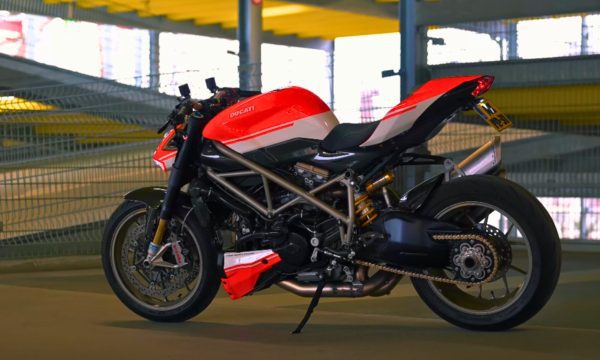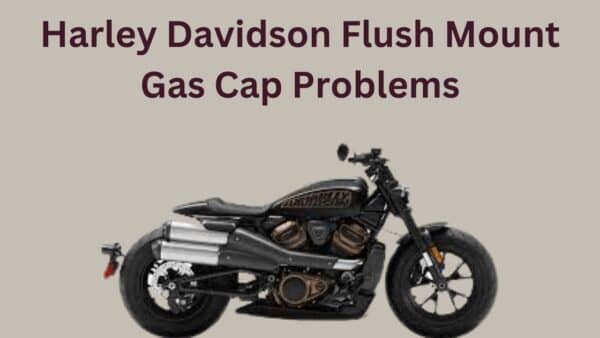The Ducati Streetfighter 848, with its aggressive aesthetics and exhilarating performance, treads a fine line between raw power and refined engineering.

However, like any high-performance machine, it is not without its quirks and issues.
Owners and enthusiasts have encountered various problems that range from minor inconveniences to issues that demand immediate attention.
In this article, we will explore these problems in detail, providing insights into their causes, effects, and potential solutions.
Ducati Streetfighter 848 Problems
Ducati Streetfighter 848 problems are ignition switch issues, backfire problems, poor acceleration, poor fuel economy, bad voltage regulator, and overheating.

1. Ignition Failure
Ignition failure is a common issue faced by owners. This problem results in difficulty starting the bike, the engine failing to turn over, or intermittent stalling during rides.
Several factors can contribute to ignition failure, including faulty spark plugs, a deteriorated ignition switch, or issues within the bike’s electrical system.
To diagnose and address this problem, begin by inspecting the spark plugs for wear and ensuring they’re properly gapped.
If the spark plugs appear to be in good condition, examine the ignition switch and its connections for signs of wear or corrosion.
However, a thorough check of the motorcycle’s battery, including its charge level and terminals, can reveal underlying issues contributing to ignition failure.
In some cases, consulting a professional mechanic may be necessary to resolve more complex electrical issues.
2. Back Firing
Backfiring typically occurs when unburned fuel ignites in the exhaust system rather than in the combustion chamber.
This can lead to a loud popping sound, which might be startling or seem like the bike is malfunctioning.
There are several reasons why backfiring can occur, including an improper air-to-fuel ratio, timing issues, or a leak in the exhaust system.
To address backfiring, you should start by checking the bike’s air filter, as a dirty or clogged air filter can restrict airflow and alter the air-to-fuel ratio.
Next, inspect the fuel injection system to ensure it is delivering the correct amount of fuel to the engine.
The bike’s timing should also be checked to ensure it is set correctly, as improper timing can cause the fuel to ignite at the wrong time.
Lastly, examine the exhaust system for any leaks, as these can allow air to enter the exhaust, leading to backfiring.
3. Poor Acceleration
Poor acceleration can manifest as a noticeable lag in response or power when the throttle is applied.
This problem can detract from the riding experience and may signal underlying issues that require attention.
One common cause of poor acceleration is a dirty or clogged air filter, which restricts the airflow to the engine, impacting its ability to perform optimally.
Regular inspection and cleaning or replacement of the air filter can remedy this issue.
Another potential culprit is the condition of the spark plugs. Worn or fouled spark plugs can result in inefficient combustion, leading to acceleration problems.
Related: Ducati Super Sport Problems
Checking and replacing spark plugs as needed is a relatively straightforward maintenance task that can significantly improve performance.
Fuel system issues, such as clogged injectors or a dirty fuel filter, can also lead to poor acceleration.
These components are crucial for delivering the right amount of fuel to the engine.
Ensuring that the fuel filter is clean and the fuel injectors are functioning properly can help resolve acceleration issues.
In some cases, the problem may be related to the motorcycle’s electronic systems, such as the sensors or the Electronic Control Unit (ECU).
These systems control various aspects of the engine’s operation and can affect performance if they are not functioning correctly.
A diagnostic scan using specialized equipment can identify any error codes or issues with these systems.
4. Poor Fuel Economy
This problem can arise due to several factors, leading to the bike consuming more fuel than expected for the distance covered.
A significant cause behind this issue could be improper maintenance, such as not regularly changing the air filter or oil, which can prevent the engine from running efficiently.
Another potential reason could be the riding style; constant high-speed riding or frequent acceleration and deceleration can increase fuel consumption.
To address this, you are advised to follow a complete maintenance schedule, ensuring that air filters are clean and oil is changed regularly.
Monitoring tire pressure is also crucial, as under-inflated tires can create more resistance, reducing fuel efficiency.
However, adopting a smoother riding style with gradual accelerations can help improve the bike’s fuel economy.
By paying attention to these aspects, you can not only enhance your bike’s performance but also achieve better fuel economy.
5. Bad Voltage Regulator
The voltage regulator plays a critical role in the motorcycle’s electrical system; it controls the amount of voltage coming from the alternator and ensures that the bike’s battery is charged correctly.
When the voltage regulator fails, it can lead to a host of problems, such as battery drain, dimming or flickering lights, and even engine performance issues.
To identify a failing voltage regulator, look for signs like a battery that won’t hold a charge, overheating around the battery area, or the check engine light turning on.
If you encounter these symptoms, it’s important to test the voltage regulator using a multimeter to confirm the issue.
Fixing a bad voltage regulator often involves replacing the part entirely, as repairs are usually not practical.
Fortunately, replacing a voltage regulator can be a straightforward process if you have some mechanical skills.
Start by locating the voltage regulator, usually found near the front of the bike, and disconnect the battery to ensure safety.
Remove the old regulator, be careful to note how it’s installed, and replace it with a new unit.
Connect the battery back, and test your motorcycle to ensure the issue is resolved.
If you’re not comfortable with DIY repairs, seeking professional help from a qualified motorcycle mechanic is the best course of action.
6. Overheating
This problem is particularly prevalent in urban settings where stop-and-go traffic prevents adequate airflow through the bike’s radiator.
Overheating in the Streetfighter 848 can lead to decreased performance, rider discomfort due to excess heat, and, in severe cases, engine damage.
To combat overheating, you are advised to ensure that your motorcycle’s cooling system is well-maintained.
This includes regular checks of the coolant level and the condition of the radiator and hoses for any signs of wear or leakage.
Upgrading the bike’s coolant to a higher quality product can also enhance its cooling efficiency.
However, installing aftermarket radiator guards can protect the radiator from debris, ensuring it operates efficiently.
If you’re frequently riding in traffic, considering a lower temperature thermostat can help by initiating the cooling process sooner.

Ahtsham Younas is a passionate blogger and content writer. He loves to ride motorcycles and learn the mechanical process behind the motorcycles.
He has been writing articles in the motorcycle industry since 2019 and has learned many things about motorbike niches.


